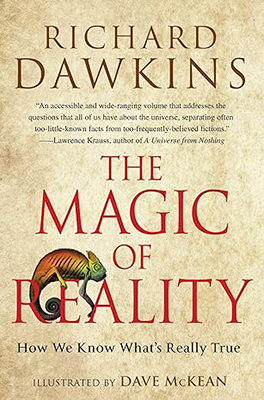The Magic of Reality
“The Magic of Reality: How We Know What’s Really True” is a book written by Richard Dawkins, first published in 2011. Here’s a summary of its key themes and contents:
Exploration of Natural Phenomena: Dawkins explores various natural phenomena and scientific concepts, such as the origin of the universe, evolution, DNA, and the diversity of life on Earth. He presents these topics in a way that is accessible to readers of all ages, aiming to foster an appreciation for the wonders of the natural world.
Scientific Method: Throughout the book, Dawkins emphasizes the importance of the scientific method in understanding reality. He explains how scientists use evidence, observation, experimentation, and logical reasoning to uncover truths about the universe, contrasting this with myths and supernatural explanations.
Debunking Myths and Superstitions: Dawkins addresses common myths, superstitions, and misconceptions about natural phenomena. He provides scientific explanations and evidence-based reasoning to debunk these myths, encouraging critical thinking and skepticism.
Illustrations and Visuals: “The Magic of Reality” features illustrations by Dave McKean that accompany each chapter, helping to visualize complex scientific concepts and make them more accessible and engaging for readers.
Cultural and Historical Perspectives: Dawkins also explores how different cultures and historical periods have interpreted natural phenomena through myths, legends, and religious stories. He compares these cultural narratives with scientific explanations, highlighting the human tendency to seek explanations and meaning in the natural world.
Educational Purpose: The book is intended to be educational, particularly for younger readers and those new to scientific concepts. Dawkins aims to inspire curiosity and a sense of wonder about the natural world while promoting scientific literacy and understanding.
Accessible Writing Style: Known for his clear and engaging writing style, Dawkins communicates complex ideas in a straightforward manner, making scientific concepts understandable and enjoyable for a general audience.
Overall, “The Magic of Reality” serves as a celebration of science and rational thinking, encouraging readers to embrace the natural world and explore it through the lens of evidence-based inquiry. It underscores the beauty and complexity of reality as revealed by science, challenging readers to appreciate the wonders of the universe without recourse to supernatural explanations.

